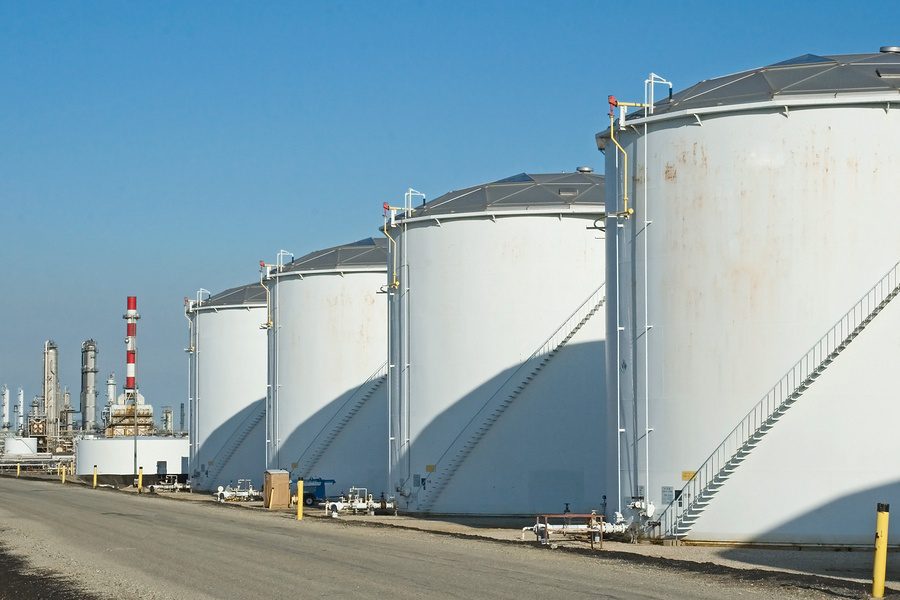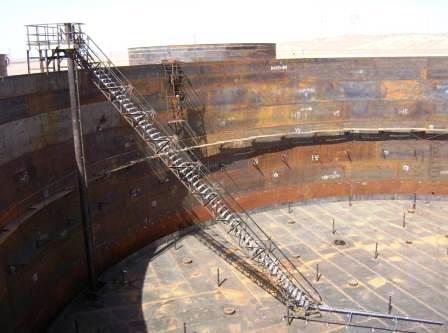The Major Role of API 650 Welding Inspection in Quality Assurance
Wiki Article
A Detailed Check Out the Installment Refine of Welding Inspection Techniques
Welding inspection is a critical procedure that guarantees architectural stability and safety and security. The installation of evaluation techniques involves numerous systematic actions, each integral to achieving trustworthy results. From planning and device option to carrying out non-destructive and visual examinations, each stage needs careful interest. Recognizing these procedures can considerably improve quality control in welding tasks. What challenges develop in executing these strategies, and how can they be successfully resolved?Understanding the Significance of Welding Assessment
Welding examination is a critical part of making certain structural stability and safety in construction and manufacturing procedures. This technique includes assessing welded joints for problems, making certain that they meet certain requirements and guidelines. By methodically gauging weld high quality, assessors can identify issues such as fractures, gaps, and incomplete combination, which can endanger the toughness and longevity of structures.The significance of welding evaluation extends past immediate security issues; it assists protect against expensive failures and potential risks in the lengthy term. Reliable evaluation techniques foster conformity with sector standards, thus enhancing the total integrity of bonded components. In addition, a robust examination process contributes to keeping the credibility of producers and home builders, as it assures clients of the quality of their jobs. Inevitably, understanding the significance of welding evaluation is critical for advertising secure building practices and guaranteeing the durability of crucial framework and products.
Selecting the Right Tools for Examination
When choosing the ideal tools for inspection, it is vital to contemplate the certain needs of the welding procedure and the materials included. Various inspection techniques, such as visual, ultrasonic, and radiographic screening, necessitate distinct tools tailored to their distinct demands. For visual assessments, tools like magnifying glasses and calipers are crucial for examining weld top quality. Ultrasonic testing calls for customized equipment efficient in transferring and getting audio waves to discover internal defects. Radiographic screening, on the other hand, uses X-ray or gamma-ray resources along with delicate movie or electronic detectors to reveal inconsistencies.
Furthermore, personal protective equipment (PPE) is necessary to assure the safety and security of assessors throughout examinations. Picking the right devices not just improves the precision of assessments however likewise adds to the general honesty and safety and security of the welding task. A complete understanding of readily available tools and their applications is essential for reliable welding examination.
Preparing for the Inspection Process
Prior to starting the inspection procedure, it is important to establish a comprehensive plan that describes the scope and purposes of the examination. This plan should include certain criteria that specify what makes up appropriate high quality in the welding work being evaluated. Determining the relevant codes and criteria is crucial, as they will lead the assessment criteria and methodologies.In addition, employees involved in the inspection needs to be appropriately educated and accredited in welding assessment methods to ensure reliability and accuracy. A list can be valuable in organizing the numerous aspects of the examination, varying from devices preparedness to environmental conditions that might affect the evaluation.

Ultimately, logistical considerations such as organizing, readily available sources, and communication between employee ought to be attended to. By preparing methodically, assessors can enhance the effectiveness of the analysis and guarantee that all vital aspects are appropriately taken into consideration prior to waging the evaluation itself.
Carrying Out Visual Evaluations

Performing visual inspections is an essential action in the welding examination procedure, needing careful prep work to guarantee efficient examination. Inspectors have to be familiar with key flaw signs that can signify potential issues in weld top quality. By concentrating on these elements, one can boost the general integrity of the inspection end results.
Getting Ready For Visual Inspection
Visual examination works as a crucial first step in the welding inspection process, assuring that any type of potential issues are identified early (API 650 Welding Inspection). Appropriate prep work is vital for efficient aesthetic evaluation. Examiners need to begin by reviewing relevant documents, including welding procedures and specs, to recognize the project needs. They must gather needed devices, such as magnifying glasses, flashlights, and suitable individual safety equipment (PPE) A complete examination of the assessment area is vital; inspectors ought to validate it is free and clean of obstructions. Additionally, it is necessary to establish excellent lights conditions to boost exposure of welds. By taking these primary actions, assessors can develop a setting for determining inconsistencies and assuring the integrity of the bonded frameworksKey Problem Indicators
A complete understanding of vital issue signs is necessary throughout aesthetic assessments to ensure the high quality and security of welded joints. Examiners ought to concentrate on specific indicators such as cracks, porosity, undercuts, and incomplete blend. Fractures might show up as sharp lines and can jeopardize architectural stability. Porosity manifests as little openings that can deteriorate weld toughness. Undercuts, which are grooves along the weld edge, can result in stress focus. Insufficient fusion indicates that the weld steel did not effectively bond with the base material, leading to a weak joint. By systematically determining these problems, inspectors can establish conformity with industry requirements and enhance the general reliability of welded structures, ultimately adding to much safer functional problems.Applying Non-Destructive Testing Methods

Countless non-destructive screening (NDT) methods are important to guaranteeing the honesty of welded structures without compromising their capability. These methods enable examiners to evaluate weld high quality and detect flaws without causing damages to the products being checked. Usual NDT strategies consist of ultrasonic testing, radiographic screening, magnetic fragment testing, and dye penetrant screening. Each technique offers a certain objective, link addressing various kinds of flaws such as fractures, porosity, or incomplete combination.
Implementing NDT methods requires a methodical approach, beginning with choosing the ideal method based on the products and the nature of the weld. Educating personnel in these techniques is crucial for accurate outcomes. Additionally, developing clear treatments and criteria guarantees uniformity throughout the inspection process. By integrating NDT into the welding assessment operations, organizations can enhance the dependability of their products while lessening possible threats linked with architectural failures. This directory proactive method ultimately contributes to preserving security and high quality requirements in welded buildings.
Documenting and Examining Examination Outcomes
Effective documentation and analysis of inspection outcomes are essential components of the welding inspection process. Accurate documents of assessment findings function as a recommendation for high quality assurance and compliance with sector criteria. API 650 Welding Inspection. Examiners need to make use of organized kinds or digital platforms to log information such as the kind of weld, inspection approaches used, and any kind of discrepancies identified throughout the assessmentComprehensive evaluation is vital once information is gathered. This includes contrasting results versus established requirements to recognize patterns or reoccuring concerns. Statistical devices may be used to quantify problems and analyze their effect on total weld quality.
Reliable interaction of searchings for to pertinent stakeholders is necessary. Recaps and records must be clear and concise, highlighting key insights and referrals for corrective actions. By systematically assessing and documenting examination results, organizations can promote constant improvement in welding techniques and boost item stability.
Frequently Asked Inquiries
What Qualifications Are Required to Come To Be a Welding Assessor?
To become a welding examiner, one normally needs appropriate accreditations such as AWS CWI, together with experience in welding methods, knowledge of welding codes, and efficiency in evaluation methods to guarantee top quality and safety standards.Exactly How Often Should Welding Inspections Be Performed?
Welding assessments must be carried out on a regular basis, generally after each weld is finished, and occasionally during tasks. Aspects such as project intricacy, market standards, and regulatory useful content needs can affect the frequency of these evaluations.What Is the Cost of Welding Assessment Providers?
The price of welding inspection services varies substantially based upon aspects such as project place, size, and complexity. Typically, prices range from $100 to $150 per hour, with added costs for specialized screening and certifications.Exist Certifications for Welding Inspectors?
Yes, there are various accreditations for welding assessors, consisting of those used by the American Welding Culture (AWS) and the International Institute of Welding (IIW) These certifications ensure assessors possess the necessary skills and knowledge for reliable analyses.
Just how Do I Pick an Assessment Service copyright?
To choose an inspection service company, one need to assess credentials, experience, industry track record, and customer evaluations. In addition, contrasting solution offerings and rates can aid ensure the picked supplier satisfies details job requires properly.Additionally, workers included in the assessment has to be adequately trained and accredited in welding assessment techniques to guarantee dependability and precision. Performing visual inspections is a necessary step in the welding inspection process, needing mindful prep work to guarantee effective evaluation. Visual examination serves as a critical very first action in the welding evaluation procedure, guaranteeing that any kind of potential defects are recognized early. Effective documents and evaluation of evaluation results are important elements of the welding examination procedure. Welding inspections ought to be carried out on a regular basis, generally after each weld is finished, and periodically during tasks.
Report this wiki page